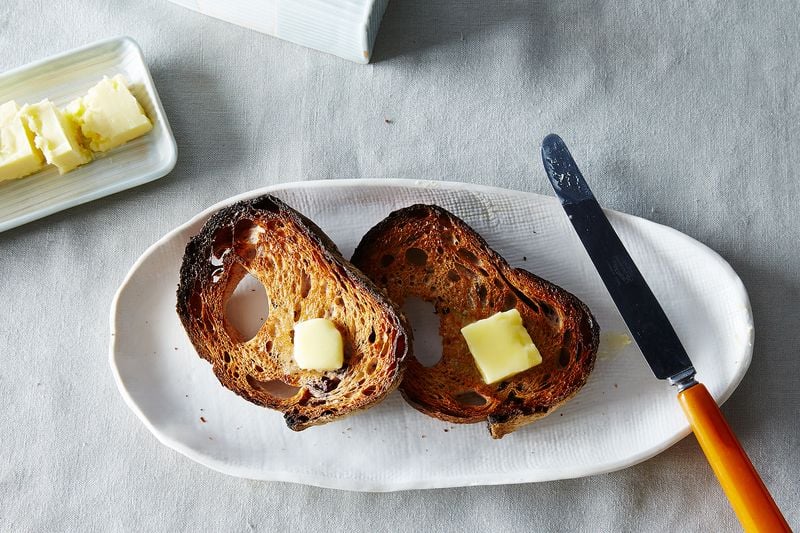Why don’t more Americans leave their butter out?
Of all the essential equipment in my kitchen—the Kitchen-Aid mixer, the Le Creuset Dutch oven, the Instant Pot—there is one piece that rises above all the rest when it comes to delivering a delicious meal. It is made of light blue ceramic, fits in the palm of my hand, and has a top shaped like a small whale.


Of all the essential equipment in my kitchen—the Kitchen-Aid mixer, the Le Creuset Dutch oven, the Instant Pot—there is one piece that rises above all the rest when it comes to delivering a delicious meal. It is made of light blue ceramic, fits in the palm of my hand, and has a top shaped like a small whale.
It’s a butter dish, and it stays out on my counter at all times. This way, I have access to butter that spreads easily and melts deeply into the chasms of a slice of grainy bread or a cinnamon-raisin English muffin when it pops out of toaster—perhaps the happiest moment of the morning.
In many of the world’s kitchens, butter’s countertop presence is a given. Or, as one Quartz editor put it during the genesis of this story: “What kind of idiot doesn’t leave their butter out?”
In short, an American one. Sometimes our reasons are, well, reasonable. When I lived in New York City, for example, my apartment had a risk of vermin and once reached a temperature that made deodorant melt in my medicine cabinet. So I kept my butter in the fridge (or just went out for breakfast). But when I moved to Los Angeles, where the temperature consistently hovers around 75°F (24°C), countertop butter became my first kitchen upgrade.
The US’s tendency to refrigerate butter is funny when you consider its obsession with indoor climate control. With the help of heating and air conditioning, many American homes are kept consistently at butter-friendly temperatures, and yet, if you want butter in a US home, you should probably look in the refrigerator.
The question of why Americans chill butter when many other cultures do not brings up a comparison to how people living in these regions of the planet treat their eggs. In that case, the answer goes beyond culture, temperature, and even gross New York City apartments. In Europe, chickens are vaccinated against Salmonella, a disease-causing genus of bacteria. But in the US, chickens are not vaccinated, so eggs are washed to prevent Salmonella contamination—but that also washes off a protective cuticle, leaving eggs vulnerable to other types of bacterial infection, especially if drastic changes in temperature cause moisture to form on the eggs’ shells. Consistent refrigeration helps prevent that.
There’s no analogous explanation for butter; Americans just seem to like refrigerating things. The editors of the cooking site Food52 are in the midst of a spirited debate about butter’s ideal temperature, inspired by a Japanese spreading device that shaves butter into small curls that melt quickly onto toast: ”On one side of the spreader, tiny perforations allow you to glide right over the creamy landscape of that Kerrygold. Like a harvester on a wheat field, a rake across a zen garden, a knife across…soft butter,” writes Maggie Slover, who like many of her colleagues, endorses butter at or near room temperature. The site’s senior editor, Eric Kim, however, prefers it “ice-cold” so that a bite leaves visible teeth marks.
As margarine continues to falls out of favor in the US (it’s been on the decline since the 1990) and Americans return to butter, perhaps more of us will embrace the countertop butter dish.
If you’re new to the joys of room-temperature butter, here’s a suggestion: go salted. Salt was originally added to butter as a preserving agent, and according to food scientist Harold McGee’s On Food and Cooking, when salt makes up 2% of butter’s weight, it acts as an effective microbial agent. (In India, efforts to destroy butter-borne bacteria via simmering also resulted in a delicious result: the nutty, clarified butter known as ghee.) And if you need any more convincing: a pat of room-temperature butter with salt is not just safer from bacteria than its unsalted counterpart, it is infinitely more delicious.